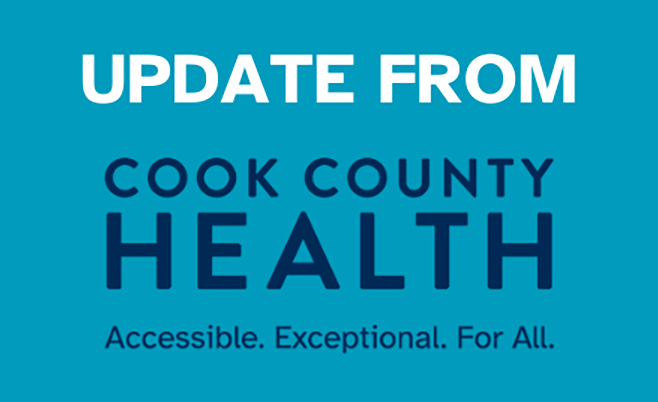Did you know that women can have subtler, less recognizable signs of a heart attack than men? Or that women face a higher cardiovascular disease risk after reaching menopause?
Heart disease is the leading cause of death in the United States for both men and women.
Cardiovascular disease may present differently in women than in men, though, because of their gender.
Cook County Health provides three facts that women should know about heart disease, as well as tips that anyone can follow to reduce their risk of developing heart disease.
FACT: Heart disease is the No. 1 killer for women
Heart disease is responsible for 1 out of 4 women’s deaths in the United States, and it kills more women in the United States than all forms of cancer combined.
“That’s why it is critical women understand their unique risk factors for cardiovascular disease, whether that be their family history or having high blood pressure,” said Dr. Rami Doukky, Chief of Cardiology at Cook County Health.
FACT: Women may have different symptoms of a heart attack than a man
For both men and women, the most common symptom of a heart attack is feeling an uncomfortable pressure, squeezing or pain in the center of your chest. This pain or discomfort typically lasts longer than a few minutes, or goes away and comes back.
Yet, women are more likely than men to experience other common symptoms of a heart attack. And almost two-thirds of women who die of coronary heart disease reported having no previous symptoms at all, the Centers for Disease Control and Prevention noted.
Symptoms that women should be particularly aware of for warning signs of a heart attack, include shortness of breath, nausea or vomiting, pain in the back or jaw, and feelings of palpitations in their chest, Dr. Doukky said.
FACT: Heart disease risk increases for women once they start menopause
Getting older increases everyone’s risk of developing heart disease. But that risk increases even more for women when they start menopause, which is usually after age 45.
Menopause—when a woman’s menstrual period stops as she ages—occurs because her ovaries stop producing the hormones estrogen and progesterone. This loss of estrogen is thought to be a major factor in why women have a greater risk of developing heart disease once they are post-menopausal.
That’s because blood pressure starts to up and certain types of fats in the blood increase. The so-called “bad” cholesterol, LDL, also tends to increase in women after menopause, which can increase their risk of heart disease.
There are tips that women and men can follow, though, to control many risk factors for heart disease, Dr. Doukky noted. Those include:
- Knowing Your Numbers. One effective way to prevent heart disease is to know important numbers for your heart—like your blood pressure and cholesterol—to see if you have risk factors that need to be addressed.
- Eating Healthy. The American Heart Association recommends eating a healthy diet that includes lots of fruits and vegetables, whole grains, low-fat dairy products, and skinless poultry and fish. A healthy diet is also low on sodium, saturated fat and sugar-sweetened beverages.
- Staying Active. Aiming for at least 150 minutes per week of moderate exercise or 75 minutes of vigorous exercise can improve your overall cardiovascular health.
- Kicking the Smoking Habit. Smoking increases your risk of heart disease at any age.

